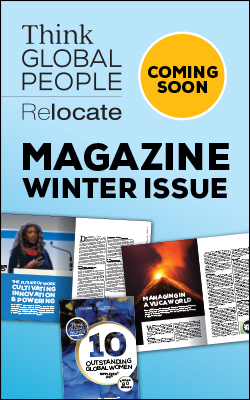Brexit talent challenge: strategies and approaches
A year after the referendum, negotiators are attempting to agree exactly how the UK will leave the EU. How are organisations planning their response and where does it leave the labour market?

Relocation and talent management
Both concerns bring skills and talent management squarely into the relocation and business continuity realm. They also add a new dimension to the mobility and talent conversation, highlighting the importance of skilled people to maintaining critical services, and the financial cost of disengagement through mismanagement of relocation during group moves.Noel Wathion, deputy executive director of the EMA and head of its Brexit task force, said in a statement announcing the agency’s business continuity plan, “Preparing for the move, managing the necessary changes, and addressing challenges such as possible losses in skilled and experienced staff in a proactive and efficient way requires considerable internal resources.”But it is not just a question of skills shortages; there are also likely to be job losses. Brexit is combining with technology and lower profits, particularly in the financial sector, to see fewer jobs go to the European mainland than some originally anticipated – anecdotally confirmed at a recent RES Forum discussion – and restructuring of organisations.Managing Brexit-related relocation
For HR and mobility leaders, the challenge, then, is creating and communicating a compelling vision for people who are relocating, and for those who are left behind. The danger of not doing so, or of not supporting relocating employees sufficiently that they want to move, is that they leave the company altogether, as the EMA warns.The Brexit: A Key Role for HR presentation from global professional services provider PwC makes creating a positive mindset around the change the first consideration for HR. This includes a proactive communication strategy, such as a channel for employees to share concerns in support of their company’s values.Understanding the Brexit challenge:
- Brexit: the great relocation battle
- Rising to the challenge: supporting inward investment
- Global mobility programmes and compliance: latest trends
The second step is to address current issues, including what will happen to pay and pension funds. Immigration is another consideration. From a business continuity and client communication perspective, the EMA, for example, is publishing details of how it is prioritising during the transition to safeguard its core activities.Finally, PwC encourages companies to look to the longer term and understand how immigration policy may affect their talent pipelines.
Talent post-Brexit
The latest update from the Office of National Statistics (ONS) suggests that the June 2016 referendum result is impacting migration to the UK, in the short term at least.Nicola White, the ONS’s head of international migration statistics, comments, “Net migration in the year to March 2017 was +246,000, a decrease of 81,000 compared with the previous year. The net migration change was driven by an increase in emigration, mainly for EU citizens and, in particular, EU8 citizens, and a decrease in immigration across all groups.“These results indicate that the EU referendum result may be influencing people’s decision to migrate into and out of the UK, particularly EU and EU8 citizens.”HR consultancy Mercer has overlaid official government and ONS data onto the UK’s demographic trends, analysing the impact of Brexit and demographic change on the UK workforce in the longer term.Using 2030 as a marker, Mercer predicts that, all things being equal, the UK-born workforce will decline by 400,000 while the net population rises. Owing to ageing demographics, the population will grow between 3 per cent and 6 per cent faster than the workforce.“Since 2013, the UK-born workforce has been declining as people retire, and we can see how reliant certain industries are on overseas workers filling the gaps,” explained Gary Simmons, partner at Mercer, launching the consultancy’s Workforce Monitor report 2017 March update.“The UK is likely to impose more stringent migration controls in the future, and this will reduce the number of overseas workers available. Problems in one sector will impact on a variety of others, so organisations need to understand the make-up of their workforce, the risks, and plan how to address this challenge.”Data from the CIPD, the professional body for HR and people development, in conjunction with the National Institute of Economic and Social Research (NIESR), published in June, shows that hospitality and the construction, agriculture, retail, social work, construction and manufacturing sectors are set to be impacted most by Brexit and demographic trends.Brexit is deepening longstanding changes and adding to the debate about how companies can best identify, attract, develop, retain and deploy people, and confirms HR and mobility’s important strategic role in responding to the challenges.Mobility, immigration and filling skills gaps
Mercer’s Five Lines of Defence model offers a framework for addressing these changes. It proposes that companies develop strategies in the following five key areas according to the specific talent shortages they face:- Build, buy and retain talent.
- Diversify the talent pool.
- Productivity through innovation.
- Move and relocate work.
- Cease UK operations.
Immigration and diversifying the talent pool
The build, buy and retain talent and diversification decision (one and two in Mercer’s model), is a ‘high and urgent priority’ in health and social work, accommodation and food services, and information and communication.At a company level, employers can revisit their skills planning and review their recruitment strategies to be assured of accessing the people with the skills they need. Reskilling existing workers and building relationships with industry bodies, apprenticeship providers, and the education sector also helps to improve the link between skills demand and supply.The CIPD and other sector representatives continue to make recommendations to government for meeting skills needs through migration. For the CIPD, these include extending the existing Youth Mobility Scheme for non-UK nationals from outside the European Union to the EU.Targeted talent planning
The need for more agile and responsive HR and mobility practices to fill skills and talent gaps is evident.As the EMA and the PRA’s comments show, relocating is far more than simply moving people and businesses. It is about minimising risks, preserving skills, experience and resources, and ensuring that corporate goals are achieved – wherever they are delivered.
 Get access to our free Global Mobility Toolkit
Get access to our free Global Mobility Toolkit  © 2017. This article first appeared in the Autumn 2017 edition of Relocate magazine, published by Profile Locations, Spray Hill, Hastings Road, Lamberhurst, Kent TN3 8JB. All rights reserved. This publication (or any part thereof) may not be reproduced in any form without the prior written permission of Profile Locations. Profile Locations accepts no liability for the accuracy of the contents or any opinions expressed herein.
© 2017. This article first appeared in the Autumn 2017 edition of Relocate magazine, published by Profile Locations, Spray Hill, Hastings Road, Lamberhurst, Kent TN3 8JB. All rights reserved. This publication (or any part thereof) may not be reproduced in any form without the prior written permission of Profile Locations. Profile Locations accepts no liability for the accuracy of the contents or any opinions expressed herein.





































